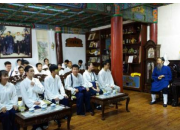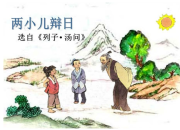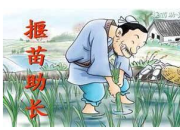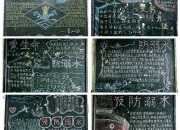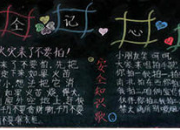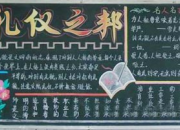《雾都孤儿》英文读后感
时间:2021-08-31《雾都孤儿》英文读后感范文(精选10篇)
当品读完一部作品后,大家心中一定有不少感悟,写一份读后感,记录收获与付出吧。那要怎么写好读后感呢?下面是小编精心整理的《雾都孤儿》英文读后感范文(精选10篇),仅供参考,希望能够帮助到大家。
《雾都孤儿》英文读后感1
To Regain the Nature of Goodness -- Review of ‘Oliver Twist’ Oliver Twist one of the most famous works of Charles Dickens’ is a novel reflecting the tragic fact of the life in Britain in 18th century. The author who himself was born in a poor family wrote this novel in his twenties with a view to reveal the ugly masks of those cruel criminals and to expose the horror and violence hidden underneath the narrow and dirty streets in London. The hero of this novel was Oliver Twist an orphan who was thrown into a world full of poverty and crime. He suffered enormous pain such as hunger thirst beating and abuse.
While reading the tragic experiences of the little Oliver I was shocked by his sufferings. I felt for the poor boy but at the same time I detested the evil Fagin and the brutal Bill. To my relief as was written in all the best stories the goodness eventually conquered devil and Oliver lived a happy life in the end. One of the plots that attracted me most is that after the theft little Oliver was allowed to recover in the kind care of Mrs. Maylie and Rose and began a new life. He went for walks with them or Rose read to him and he worked hard at his lessons. He felt as if he had left behind forever the world of crime and hardship and poverty. How can such a little boy who had already suffered oppressive affliction remain pure in body and mind? The reason is the nature of goodness. I think it is the most important information implied in the novel by Dickens-he believed that goodness could conquer every difficulty. Although I don’t think goodness is omnipotent yet I do believe that those who are kind-hearted live more happily than those who are evil-minded. For me the nature of goodness is one of the most necessary character for a person. Goodness is to humans what water is to fish. He who is without goodness is an utterly worthless person. On the contrary as the famous saying goes ‘The fragrance always stays in the hand that gives the rose’ he who is with goodness undoubtedly is a happy and useful person. People receiving his help are grateful to him and he also gets gratified from what he has done and thus he can do good to both the people he has helped and himself.
《雾都孤儿》英文读后感2
Here I am sitting on a couch alone, thinking about what I have just finished reading with tears of sadness filling my eyes and fire of indignation filling my heart, which revived my exhausted soul that has already been covered by the cruelty and the selfishness of the secular world for a long time. It is truly what I felt after reading Oliver Twist, written by the prominent British author Charles Dickens.
The resonance between me and the book makes me feel not only the kindness and the wickedness of all the characters in the novel, but what this aloof society lacks, and what I lack deep inside. These supreme resources I’m talking about right now are somewhat different from minerals, oil that we usually mention. They’re abstract like feelings, and some kinds of spiritual stimulation that all of us desire anxiously from one another love and care.
Those charitable figures whom Dickens created in the novel are really what we need in life. They showed love and care to others, just as the gentle rain from the sky fell upon the earth, which was carved into my heart deeply.
Mr. Brownlow is one such person.
The other day he had one of his elaborate watches stolen by two skilled teenage thieves, Artful Dodger and Charley Bates, and thought naturally it was Oliver, who was an orphan and forced to live with a gang of thieves, that had done it because he was the only one near by after the theft had taken place. Being wrathful, he caught Oliver, and sent him to the police station where the ill-tempered, unfair magistrates worked. Fortunately for him, Oliver was proved innocent by one onlooker afterwards. With sympathy, Mr. Brownlow took the injured, poor Oliver to his own home. There Oliver lived freely and gleefully for some months as if he were Mr. Brownlow’s own son. One day, however, Mr. Brownlow asked Oliver to return some books to the bookseller and to send some money for the new books that he had already collected. The thief Oliver once stayed with kidnapped him. After that he disappeared in Mr. Brownlow’s life. Searching for a while, Mr. Brownlow had to believe the fact that he had run away with his money. But dramatically, they came across each other again a few years later. Without hesitation, Mr. Brownlow took Oliver home for the second time not caring if he had done something evil.
Perhaps most of us would feel confused about Mr. Brownlow’s reaction. But as a matter of fact, this is just the lesson we should learn from him. Jesus said in the Bible. “Forgive not seven times, but seventy-times seven.” Why is that Because forgiveness is our ability to remove negative thoughts and neutralize them so our energy may be spent on doing what we came here for. We cannot move forward in our future if past issues cloud our thinking. ()Stop put Mr. Brownlow into the list of your models. Always give people a second chance no matter what they might have done. That’s also a substantial part of loving and caring others.
Then there are Mrs. Maylie and Rose, Oliver’s other benefactors. Maybe the reason they loved and cared Oliver was not because of forgiveness. In my point of view, it was trust. They had faith in Oliver when he was considered to be a filthy burglar who tried to break the front door of Maylie’s at midnight. But this wasn’t how these two ladies saw the whole thing. They denied Oliver’s crime immediately and listened attentively to Oliver’s own description of his miserable life. They were deeply touched by Oliver’s strong perseverance and astonishing vitality. Accordingly, they remedied Oliver’s body and heart and turned him into a different boy. He began to wear appropriate and clean suits which were tailor-made for him and receive education.
As far as we can see, it is trust that helps us all live together without precaution. Sometimes trust can even lead us to miracles, which we often expect to come about, so why not trust Trust yourself, trust others, and you’ll salute miracles every single day.
《雾都孤儿》英文读后感3
Oliver Twist is a novel written by Chales Dikens .It mainly describes a little boys tough experiences .This novel reveals the authors attitude towards life in some point.
Oliver Twist was an orphan who was brought up by Shelia who lived in hospice. Oliver was regarded as a bastard, which resulted lots of discrimination.
In the foster home , he was on behalf of children to ask for more porridge ,which considered as a kind rude and unpolite behavior .He was confined for several days and came across another suffering.
Mr Bumble sent him to a coffin maker. In this plot ,I was attracted by the man Mr Noah who was also a servant .He played tricks on Oliver to grab some external fun .He deliberately said Olivers mother was a bitch who had a child without marriage.
This kind of writing is advanced .It satirized the dark society .peoples ignorance trapped kind people all the time .In contrast,Oliver , a naive boy who existed in a horrible environment ,always kept good honest.Although he knew nothing about his mother ,he persisted in beliving his mothers kindness.A little boy owned those good quality in dark society is doubted.But it reflects the authors opinion .Love makes the world go around.This topic was proved though the novel.
In an anthor plot ,Oliver entered a haunt of thieves by accident.A girl names Nacy rejected Mr Brownlows help .She had no courage to leave the haunt where people had the same fate ,especially his beloved boy Sikes.In the end ,she was beaten to death .And this plot is the trasition .It hinted that bad people are destined to compensate. For Olivers kindness ,he finally led a happy life with many kindhearted peoples help.
This consequence accords with peoples common criterion.Temporarily difficulities is not terrible as long as you reasonably deal with it.And success is on the way.Whats more,we should always put love in the bottom of hearts.



